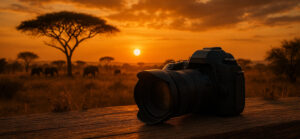Nature photography is a genre that captivates millions, offering a window into the world’s most breathtaking landscapes and intriguing wildlife. As a passionate photographer, capturing the beauty of nature not only requires skill and creativity but also patience and a deep appreciation for the environment. In this blog post, I will share some essential tips and insights to help you elevate your nature photography game and capture stunning images that resonate with your audience.
Understanding Light and Timing
One of the most crucial elements in photography is light, and this holds especially true for nature photography. The quality of light can dramatically affect the mood and impact of your images. To make the most of natural light, consider shooting during the golden hours—shortly after sunrise or before sunset. During these times, the light is softer and warmer, casting beautiful shadows and enhancing textures.
While golden hours are favorable, don’t shy away from shooting in other lighting conditions. Overcast days can provide diffused, even lighting, perfect for capturing details without harsh shadows. The key is to adapt to the available light and use it creatively to enhance your subject.
Embracing Patience and Persistence
Nature photography often requires patience and persistence. Whether you’re waiting for the perfect moment when the light hits a landscape just right or waiting for a wild animal to appear, patience can reward you with incredible images. Take your time to observe and immerse yourself in the environment, and be ready to capture spontaneous moments that might arise unexpectedly.
Composing the Perfect Shot
Composition plays a vital role in the effectiveness of your photographs. Utilize the rule of thirds to create balanced and engaging images. Imagine your frame divided into nine equal parts by two horizontal and vertical lines. Positioning key elements along these lines or at their intersections can create more dynamic and interesting compositions.
Leading lines, framing, and the use of negative space are also powerful compositional techniques. Leading lines can guide the viewer’s eye through the image, while natural frames such as branches or rocks can add depth and context to your shots. Negative space allows the subject to stand out and can evoke a sense of isolation or tranquility.
Exploring Different Perspectives
Changing your perspective can lead to unique and compelling photographs. Instead of shooting everything at eye level, try experimenting with different angles. Get low to the ground to capture a worm’s-eye view or find a higher vantage point for a bird’s-eye perspective. Exploring various perspectives can add diversity to your portfolio and help you tell a more complete story of the scene.
Respecting Nature
As nature photographers, we have a responsibility to protect and respect the environments we photograph. Always adhere to ethical practices by avoiding disturbance to wildlife and their habitats. Follow local regulations, stay on designated paths, and leave no trace. Our goal should be to capture the beauty of nature while preserving it for future generations.
Investing in the Right Gear
While a good photographer can capture amazing images with any camera, the right gear can certainly enhance your capabilities. A sturdy tripod is invaluable for landscape photography, particularly in low light situations. Wide-angle lenses are great for capturing expansive vistas, while telephoto lenses are essential for wildlife shots.
Consider weatherproof gear if you frequently shoot in challenging conditions. Protecting your equipment from the elements is crucial to ensuring its longevity and reliability.
Post-Processing and Sharing Your Work
Post-processing is an integral part of modern photography. Use editing software to enhance your images, but strive to maintain a natural look. Adjustments to exposure, contrast, and color can bring out the best in your photographs, while cropping can help refine composition.
Sharing your work is an opportunity to inspire others and receive feedback. Join photography communities, share your images on social media, and participate in exhibitions. Engaging with fellow photographers can provide new insights and help you grow as an artist.
In conclusion, nature photography is a rewarding pursuit that combines technical skill with a profound appreciation for the natural world. By mastering lighting, composition, and perspective, and maintaining an ethical approach, you can create images that not only capture the beauty of nature but also evoke emotion and tell a story. Happy shooting!



